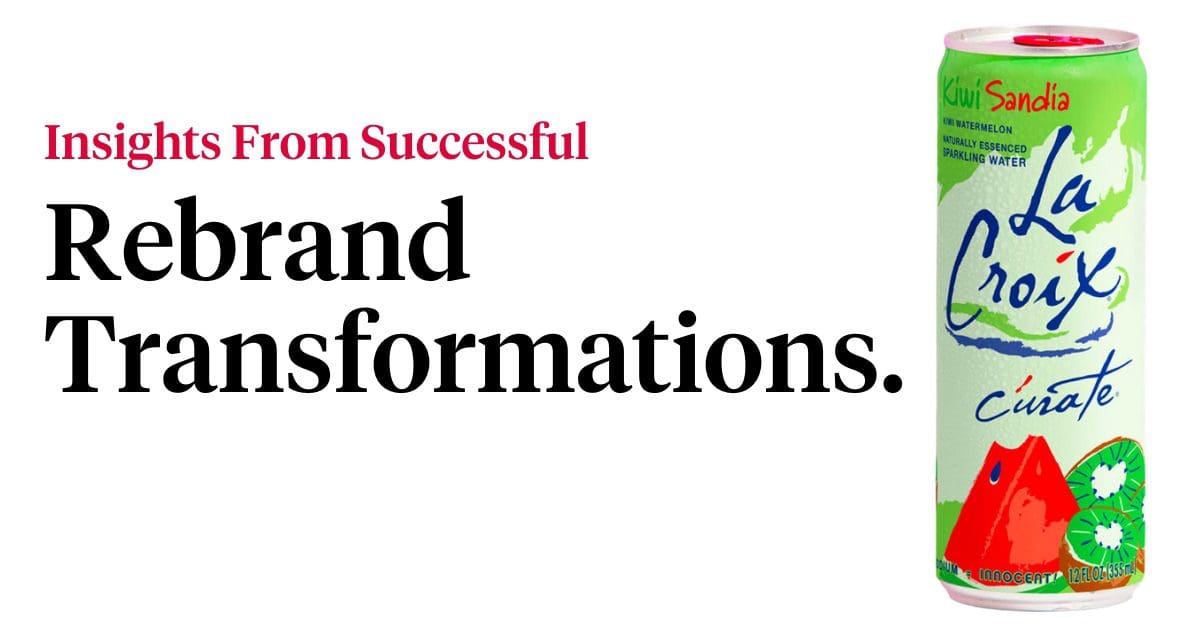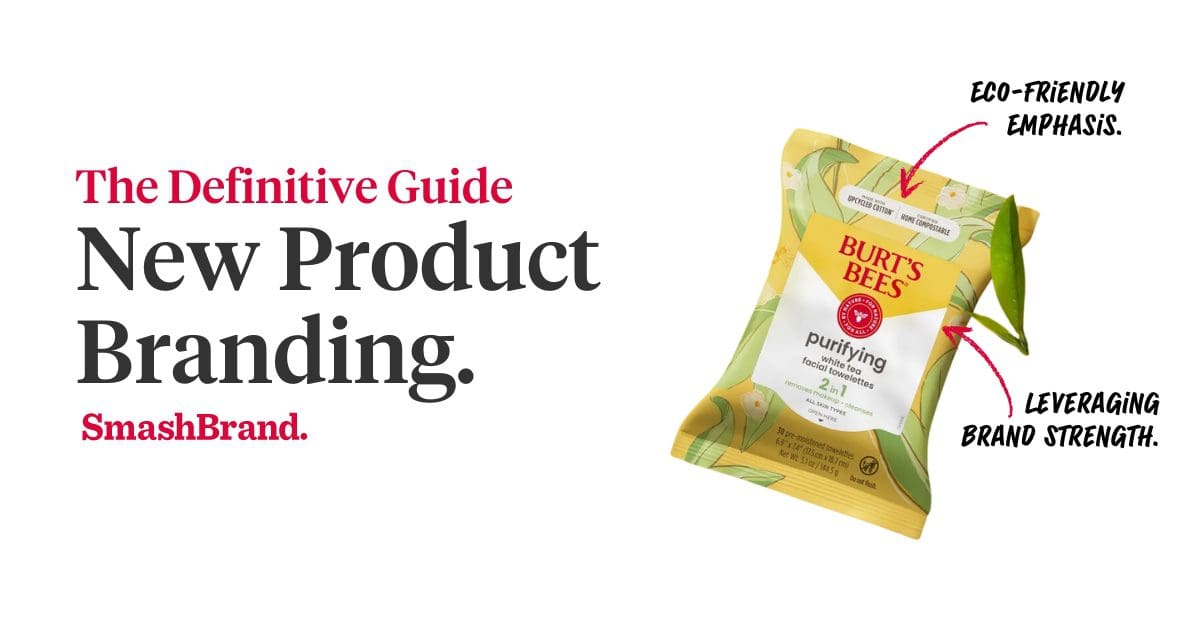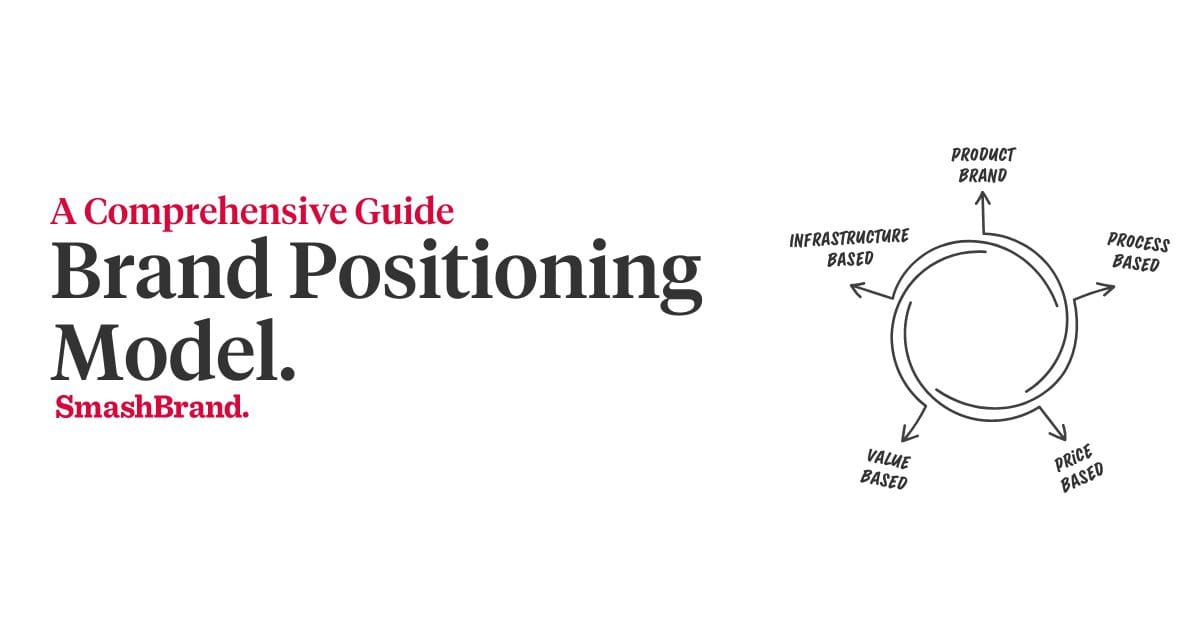Ready to take your brand to the next level? Of course, you are! Are you looking to keep your brand positioning and messaging relevant as the market needs shit? My bet is you’re saying yes to this as well.
The good news is that a successful rebranding campaign can accomplish both in one fell swoop. Strategic rebranding gives your company a new brand identity perfectly aligned with the latest market trends while retaining the essential brand assets that have created memorability in the minds of consumers.
With a well-executed rebranding rollout plan, you can breathe new life into your company and its products, creating buzz that keeps people talking. Contrary to what the media may suggest, rebranding is about more than just getting a new logo or changing the color palette but creating a new adapted marketing strategy.
By carefully crafting your brand messaging, visual identity, and overall brand strategy, you create a stand-out brand with a cohesive personality for your target audience.
A great way to begin the journey is by looking for inspiration and learning from previous rebrand experiences. This article explores the lessons and insights gained from some of the most successful rebranding transformations, giving you the tools to create your successful rebranding strategy.
From developing a clear brand vision to executing a comprehensive rebranding rollout plan, we’ll cover everything you need to know to make your rebranding campaign successful.
So, let’s dive in and discover the power of a successful rebranding campaign that includes a new brand identity, a new logo, and a strong brand personality!
What Defines A Successful Rebrand
Before we get ahead of ourselves, let’s set measures for a successful rebranding campaign. We can define “success” as meeting or exceeding the intended goals and objectives, which can vary depending on the company’s specific needs and circumstances. However, one thing is clear. You must set meaningful goals for the rebrand to make sense.
Here are some factors that define a successful rebrand:
- A successful rebrand must result in a solid and cohesive brand identity reflecting the company’s core values and mission, enhancing the brand story in the consumer’s mind.
- Effective rebranding delivers a consistent vision and brand identity across all channels and touchpoints, increasing brand recall, which sets the stage for future brand and line extensions.
- The rebrand must create buzz and generate excitement among customers and the internal team, bringing new life and attention to the company.
A well-executed rebranding rollout plan helps to achieve this, along with comprehensive marketing and communication strategies.
A rebranding campaign must improve performance, such as sales, market share, and customer loyalty. Branding agencies can utilize various analytics tools and reporting dashboards to track these performance indicators. Lastly, a successful rebranding campaign must be sustainable and adaptable to the evolving market conditions and customer needs.
Read More: 21 Valid Reasons For Rebranding A Company.
Fundamental Aspects of A Rebranding Strategy
Developing a successful rebranding strategy is a complex process requiring careful planning and execution. Therefore, branding agencies consider several critical aspects before initiating a rebranding process. It paves the way for a solid brand strategy, differentiating them from their competitors.
Let’s create a rebranding checklist to develop a perfect rebranding rollout plan.
Market Research
The better you prepare for a rebrand, the more impactful the outcome will be. Performing market research is a fundamental aspect of preparation. Here are just some of the benefits of going through this process.
- Conducting market research permits companies access to valuable consumer insights where they can gather the necessary data about the target audience and competitive set.
- When you take a comprehensive approach, it includes deep analysis to understand consumer behavior, preferences, and attitudes toward the brand. Through this approach, you can better identify potential opportunities and challenges in the market.
- By conducting market research, companies are better equipped to understand their target audience, including their needs, wants, and expectations. For example, companies can determine which brand attributes are most important to their target audience, which can inform the development of a new brand image.
Companies can gather feedback from their target audience through surveys, focus groups, and other research methods to gauge brand sentiment and identify areas for improvement.
Defining Brand Objectives
After conducting thorough market research, the next step is to define actionable brand objectives. Defining brand goals ensures companies stay on track, maintaining brand value and creating a path for consistent market share growth.
Refining branding efforts based on market research maximizes brand awareness by identifying improvement areas. It gives a new life to the dampening brand messaging and brings new opportunities for growth and success.
Creating A Rebranding Strategy
A successful rebrand strategy is formed based on actionable and clear objectives. These objectives depend upon whether the company needs to engage in brand repositioning through a complete rebrand, make several significant changes through partial rebranding, or need a brand refresh.
Each of these rebranding efforts comes with pros and cons. The main risk associated with rebranding is the dilution of brand recognition, where the brand’s messaging and marketing strategy drift away from the target audience’s preferences and needs.
Brand Voice
A strong brand voice is a critical component of any successful branding strategy. The personality and brand tone differentiate a company from its competitors and create connections with consumers. For a brand voice to be effective, it must engage the target consumers emotionally through its authenticity and genuineness.
The more targeted and distinct a company’s brand voice becomes, the better it establishes brand loyalty. Since repeat purchases have a lower CAC (customer acquisition cost), this aspect of a rebrand, where you create a lasting impression in the minds of consumers, is critical to a brand’s success.
Businesses must define their brand personality and tone to develop a stronger brand voice.
Design and Aesthetics
Whether on the website, social media profiles, packaging design, or marketing materials, design and aesthetics are essential in branding. A visually appealing and cohesive design creates the necessary brand that creates recall with consumers. When producing an updated visual identity through rebranding, companies must consider several key design elements, from typography to layouts.
Brand consistency is another essential design consideration. Brand elements must be consistent across all branding materials, such as logos, websites, social media handles, and packaging, as it is a memorability multiplier.
Businesses must also consider the overall aesthetics of their brand, including the tone, style, and mood of the packaging materials. There is a science to the design process that influences purchase decisions and evokes an emotional response.
Brand Testing
After launching the rebrand, it is essential to keep consumers in the loop and test the new strategy. It involves gathering feedback from consumers and stakeholders to evaluate the effectiveness of the new messaging and identity. There are multiple methods of brand testing, including surveys, focus groups, and online analytics tools.
These methods can help companies gather feedback on various aspects of their branding strategy, such as brand awareness, perception, and loyalty. Brand testing can help companies identify areas for improvement and make informed decisions about their branding strategy.
Go To Market Launch
Go-to-market launches are highly effective for adding new products and creating buzz and excitement while allowing a company to develop a clear brand guideline. Social media is one of the critical components of the go-to-market launch strategy. Therefore,e companies must utilize power and effective social media marketing tactics such as targeted ads, influencer marketing, and engaging content.
Besides that, companies must also consider additional marketing channels, including email marketing, Search Engine Optimization (SEO), and public relations (PR). These multiple marketing channels help companies reach a wider audience and create more impact.
Ongoing Brand Management
The final component of any successful branding strategy is ongoing brand management. Managing a brand includes monitoring and evaluating the effectiveness of the brand strategy making adjustments when necessary.
Regularly adjusting and evaluating your approach through consumer feedback is necessary for every rebrand. Businesses must ensure that all marketing materials, advertising, and branding initiatives align with established brand guidelines.
Read More: 24 Critical Rebranding Questions You Must Ask.
Case Study 1: Lip lab
Bite Beauty, now known as Lip Lab, struggled to keep up with evolving market trends despite having a loyal customer base in the highly competitive beauty industry.
In the color cosmetics industry, Bite Beauty faced challenging competition, and its decision to reformulate products while adding new product lines didn’t receive positive responses. As a result, the brand’s popularity and revenues decreased. Bite Beauty needed a fresh strategy to distinguish itself and draw in customers.
Lip Lab focused on its core differentiator—an experiential retail format. Under the new identity, Lip Lab put the consumer at the center of the experience, allowing them to create custom lip products that matched their preferences perfectly.
The in-store experience and online product offerings reflect this personalized approach. Lip Lab leveraged social media and TikTok, capitalizing on its stores’ visually appealing and shareable aspects. The brand promoted partnerships with influencers to increase its online presence.
Lip Lab’s innovative approach to personalized beauty experiences sets it apart from competitors and makes the brand memorable to consumers. With a price point that offers accessible luxury, Lip Lab taps into the growing consumer demand for unique, customized cosmetics. Not only this, but the company has also created a loyal customer base and is achieving impressive growth.
Understanding consumer preferences, embracing experiential retail, and being willing to rebrand boldly are the keys to Lip Lab’s success. Creating a fresh and innovative identity in a competitive market.
Case Study 2: Popeyes
Popeyes, a Louisiana-based fast food company, faced multiple challenges. Despite having a loyal customer base for its flavorful Cajun recipes, Popeyes was a hidden gem, often overlooked in favor of its competitors. Its branding lacked playfulness and was outdated. The company struggled with high executive turnover, hindering long-term strategic planning.
The brand needed to tap into the power of digital channels while creating a modern image that resonates with a broader audience. While its food quality was commendable, Popeye’s needed to find a way to differentiate itself in the highly competitive quick-service restaurant (QSR) industry. So, to improve its positioning and revenues, the company rebranded.
During its rebranding initiative, the company underwent a visual identity overhaul, which helped it modernize its brand image. The new look was consistent across packaging, uniforms, merchandise, and restaurants. The company invested in expanding its mobile ordering and delivery capabilities, making its products more accessible. Popeye’s partnered with third-party delivery services to increase accessibility and reach a wider audience.
Popeyes adopted a socially driven and authentic advertising approach, reacting in real-time to pop culture moments. This shift led to a surge in earned media impressions. They initiated sustainability efforts to remove artificial additives and antibiotics necessary to human medicine from their products. The company removed styrofoam from its packaging to reduce the environmental impact.
Popeyes rebranding case study underscores the importance of visual identity and omnichannel marketing. The company experienced domestic revenue and global expansion by executing a carefully planned brand overhaul.
A takeaway for all CPG and food service brands: incorporating sustainability and healthier food options can have a substantial impact.
Case Study: La Croix
La Croix, a once-obscure soft drink from the Midwest, rebranded itself into a fashionable and coveted beverage brand. Before the rebrand, the company had a stable regional following for over two decades but struggled to gain national recognition. Their reach was limited and relatively unknown outside its core market.
Another major challenge for La Croix was changing consumer preferences in the flavored water category. As consumer concerns about healthy eating and drinking grew, interest in sugary sodas and alcoholic beverages declined, resulting in an influx of flavored water beverage companies. The company was losing ground as more and more competitors entered the market.
At the beginning of its rebrand, La Croix concentrated on creating an image of “casual sophistication,” emphasizing energy, movement, and fluidity in its design concepts. The choice was unusual but compelling, reflecting the brand’s identity as effervescent water.
La Croix presented three packaging concepts to consumers for feedback, and the lively, ’80s-inspired design was the overwhelming favorite. This consumer-driven approach ensured that the new packaging resonated with La Croix’s target audience. They also introduced 20 new and unique flavors that helped immensely differentiate the brand from its competitors, primarily offering citrus flavors.
The company also leveraged early-stage social media platforms to build a grassroots following. Rather than relying on celebrity endorsements, they encouraged average users to share their experiences with the brand. This approach made La Croix appear authentic and appealing to millennials.
These brand changes drastically improved the company’s image, helping transform La Croix from a regional favorite to a nationally recognized brand. The uniqueness of flavors and focus on healthy ingredients helped the company to stay relevant with the evolving market needs and changing consumer preferences.
Common Rebranding Mistakes To Avoid
Remember that rebranding can have many benefits but does not guarantee success. There are risks of rebranding can harm a brand’s reputation and equity if improperly executed. Companies must plan and execute their rebranding strategy carefully to avoid these pitfalls. Here are some common mistakes to watch out for that can negatively affect a brand’s recognition.
An Example Of A Failed Rebrand
There are multiple examples of rebranding failures that can give valuable lessons. For instance, one of the hottest in the tech industry is Twitter, which Elon Musk acquired in 2023. He made some significant changes to the social media platform, which faced consistent negative feedback from users. The company’s original ID once served as a branding lesson, with its logo representing short conversations.
The company changed the friendly bird logo to what Elon Musk loves the most, “X.” This decision didn’t make consumers and experts very happy; the new name doesn’t say anything about the platform’s personality. Another well-known example in the packaged food industry is the rebrand of Tropicana.
The company invested $35 million in rebranding, hoping to attract more customers and generate more sales. But things didn’t go as planned, and instead of generating more sales, the company faced a 20% decline with a nearly $30 million loss. The new packaging and updated logo felt boring to the consumers.
Lack of Research
From the above examples, it is clear that proper research is necessary for the rebranding effort to lead to success. Companies must conduct thorough research to make assumptions about their target audience or understand the competitive landscape, leading to ineffective or harmful rebranding efforts. To avoid this mistake, companies must focus on analyzing the trends in the target market needs.
The latest technologies, such as AI and machine learning, can help save time in market research by analyzing the hidden features from past market data. Companies can leverage analytics from social media fan following and other means to gather the necessary information for decision-making.
Neglecting Existing Brand Equity
Neglecting existing brand equity is a common mistake that can negatively affect rebranding efforts. Brand equity is the value that a brand holds in the minds of consumers, including brand recognition, brand messaging, and other essential elements of the brand’s identity.
When rebranding, it’s essential to consider the existing brand equity and ensure that any changes are consistent with the brand’s personality and values. Refrain from affecting existing brand equity to avoid confusion and dilution of brand recognition and loyalty.
Poor Execution
When a rebranding initiative is not implemented or carried out properly, it can be considered poor and greatly hinder the success of the rebranding effort. Poor execution occurs when a brand only partially applies the changes made during rebranding to the company’s advertising, marketing, and presentation, including the new logo, color palette, or messaging.
Inconsistent use of branding elements across various channels can confuse and weaken the brand’s identity, making it less effective. Overlooking minor details that can significantly impact is often involved in poor execution.
For instance, if a company updates its logo but fails to update its signage or website promptly, it can create an unprofessional and disjointed image, shaping the brand’s overall perception. Being careful in implementing rebranding strategies is critical to its success.
Lack of Brand Penetration
Lack of brand penetration occurs due to multiple reasons. For instance, when a company lacks a comprehensive marketing strategy to promote its rebrand, it may struggle to reach its target audience effectively. Additionally, ignoring digital marketing channels, such as social media, search engine optimization (SEO), and targeted online advertising, can hinder a brand’s ability to connect with its audience if the target market primarily engages online.
A Summary Of What We’ve Learned
After making it this far, let’s summarize the key takeaways from this article:
- Importance of Strategy: The success of a rebranding campaign relies heavily on having a well-defined and comprehensive strategy. Rebranding includes developing a clear brand vision, creating a solid and cohesive brand identity, and executing a thorough rebranding rollout plan.
- Research is Crucial: Lack of proper research, assumptions about the target audience, and competitive landscape can lead to ineffective rebranding efforts.
- Team Involvement: Engaging stakeholders, including customers, employees, and partners, is a critical aspect of rebranding success. Feedback and collaboration help ensure that the rebrand resonates with the intended audience and aligns with the company’s mission.
Rebranding is a Long-term Commitment: Rebranding should not be a one-time event but a long-term commitment. Ongoing brand management is necessary to monitor and evaluate the effectiveness of the brand strategy over time.
Data-Driven Brand Development That Can Guarantee Sales Performance.
If you need a new name or rename with performance predictability, we can help. SmashBrand is a rebranding agency that researches, designs, and tests all brand assets to ensure peak shelf performance. Book a time to learn more about how we can help you find the right name and to discuss your project with our team.










